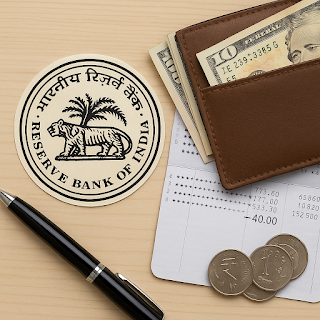After the Ban on ₹2000 Notes, RBI Issues Circular Regarding ₹500 Notes
Currently, the ₹500 note is the highest denomination in circulation in India. Earlier, the ₹2000 note held that position, but the Reserve Bank of India (RBI) has withdrawn it from circulation. Now, discussions are swirling around the ₹500 note, prompting RBI to issue a new circular to clear the air. Let’s take a closer look at what India’s central bank has stated in this official communication.
The Rise and Fall of the ₹2000 Note
The ₹2000 note was introduced in 2016 after demonetization and quickly became the highest-value currency note in the Indian market. However, RBI recently announced its withdrawal, directing people to either deposit or exchange these notes at banks.
With the ₹2000 note being phased out, the ₹500 note has taken its place as the most valuable denomination. As a result, speculations began rising—will RBI also discontinue the ₹500 note?
RBI’s Latest Circular Clears Confusion
To address growing concerns and rumors, RBI released a circular clarifying the validity of the ₹500 note. According to the circular, the ₹500 note remains fully legal and will continue to circulate in the market. There is no plan to withdraw it, and people can continue using it without any worries.
Buzz Around ‘Star’ Marked Notes
A major topic trending on social media is the ₹500 notes that have a star (*) mark in their serial numbers. Many posts claimed that these notes are fake or not legally valid. The confusion forced RBI to issue a clarification on the legitimacy of these star-marked notes.
Why Are Star Marks Used?
RBI explained that the star symbol is used when a replacement note is issued due to a printing error in the original note. If a batch of notes has a misprinted one, a new note with the same serial number but a star mark is printed to replace it. This practice, introduced in 2006, helps maintain the serial integrity while ensuring the faulty notes are removed.
RBI’s Statement on Star Notes
In the circular, RBI clearly stated that star-marked ₹500 notes are genuine and valid. Banks cannot refuse to accept them, and neither can shopkeepers or individuals. The presence of a star simply indicates that it’s a replacement note and nothing more.
These notes are fully authentic and have the same value as any regular ₹500 note. The number on these notes is printed with a star between the alphabetical prefix and the numeral, signifying a replacement issued under RBI’s replacement policy.
What to Do With Your ₹2000 Notes?
Even though the ₹2000 note has been withdrawn, RBI has allowed people to deposit or exchange these notes at banks. If you still have them, you can:
-
Deposit them into your bank account,
-
Exchange them at any bank branch,
-
Visit the nearest RBI regional office or post office to deposit them.
RBI has made it convenient for people to return these notes without any hassle.
Is RBI Planning to Ban ₹500 Notes Too?
This is one of the most common concerns among the public. With the ₹2000 note out of circulation, many people feared the ₹500 note might follow the same path. However, RBI’s latest circular makes it clear—there are no plans to withdraw ₹500 notes. They are and will remain valid for all transactions.
Have a Star Note? Don’t Panic!
If you come across a ₹500 note with a star in the serial number, there’s no reason to panic. It is a genuine note, and you can use it like any other. If any shopkeeper or bank refuses to accept it, you have the right to raise a complaint.
The RBI’s explanation gives assurance that these notes are simply replacements for defective ones and are part of a long-standing policy.
RBI’s Move Brings Stability to the Market
This timely clarification from RBI has helped calm the uncertainty surrounding ₹500 notes. It not only boosts public confidence but also stabilizes currency transactions in the market.
RBI’s clear stance has prevented further spread of rumors and misinformation, especially on social media platforms where speculation tends to snowball quickly.
Conclusion
The ₹500 note is now India’s highest-value currency note in circulation. While discussions and rumors around its validity were gaining momentum, RBI has set the record straight through its official circular.
Star-marked ₹500 notes are genuine, legally valid, and must be accepted in all types of transactions. Additionally, people can still deposit or exchange their old ₹2000 notes as per RBI guidelines.
Ultimately, the key takeaway is—always refer to official RBI sources for currency-related news instead of believing in social media rumors. Staying informed and aware helps protect both your money and your peace of mind.





Comments
Post a Comment